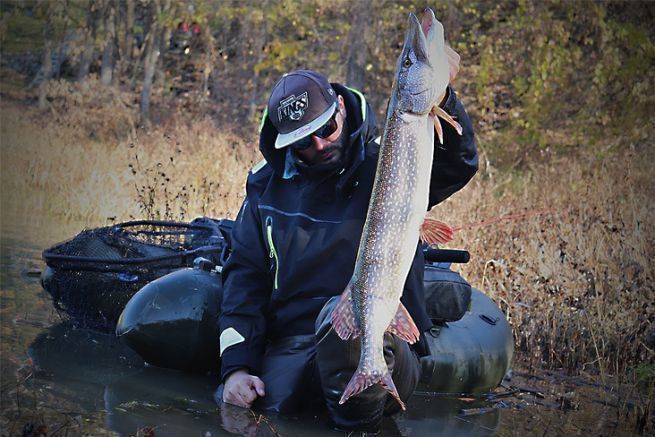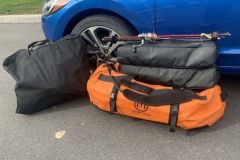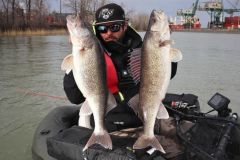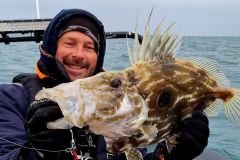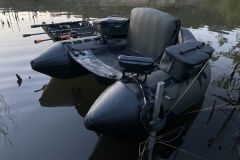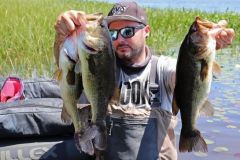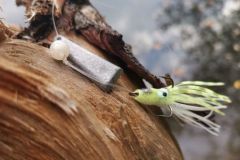The sunrise
One very important thing, even if it is winter and one could believe that this has less importance, is that the first hour after sunrise is the one that corresponds with a maximum presence of fish, visible on the echo sounder. As the morning progresses, I see the movement of the fish, with the density strongly reduced, which is a sign that the fish are changing location to return to depth. The same phenomenon can be observed at nightfall, with fish moving back to shallower depths. It is therefore necessary to maximize this time of presence of the fish in the shallow depths.
The right lure
The clear, translucent water makes me lean towards using lead heads and lures with natural colors and the results are not long in coming with a nice pike after five minutes of fishing, followed quickly by a few crappie that were not afraid to attack a 4 inch lure. Generally, for this species, we use lures of 2 inches and less.
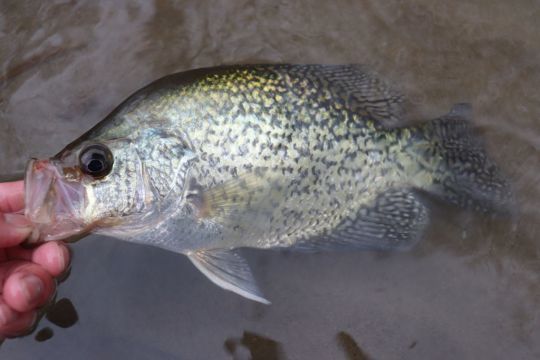
Concerning the lure colors, I use white at the beginning of the session, when the light is low, to finish on more transparent colors as the sun rises.

The right area
Even if this pike is a beautiful fish that makes you happy, it is not the species I am looking for and I prefer to prospect elsewhere, to find the area where the walleyes are holding. In order to take advantage of the moment of activity at daybreak, I prospect the different zones quickly enough to locate the fish, and, afterwards, insist by successive passages on the promising zones. Indeed, when I find a fishy zone, I prefer to make repeated passages at constant speed, rather than to reduce my speed. Even if the presence of fish on the echo sounder can give the desire to slow down to leave the lure longer in their field of vision, this can be a mistake, because what triggers the attacks is a lure that swims, not a lure that hovers, at least this day.
In this survey, I explore a rocky edge of 4 meters deep. This edge is promising, because there are many fish echoes. However, I quickly realize that it is not walleyes, but striped bass that frequent the area.
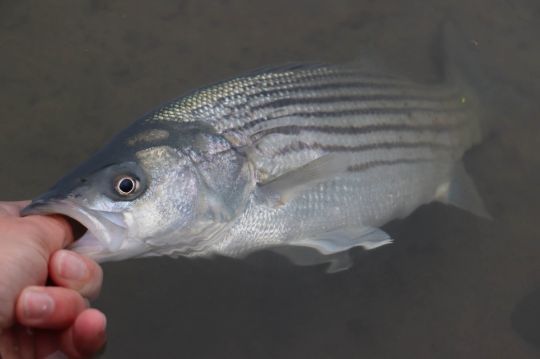
From experience, bars and walleyes don't seem to coexist, and whenever bars are present, I don't do walleyes. So I decide not to linger on this area and to continue this edge, but further than where the bass are holding. By making several drifts, I finally catch some walleyes, without really targeting a precise area, except the depth in which they are holding.
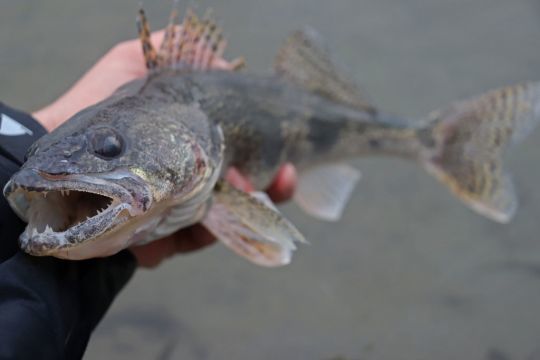
This is an area that I know well and knowing the holding areas of the fish allows me to move quickly from one area to another, because what I can observe is that pike, bass and walleye frequent the same areas, but do not cohabit. So, if an area is taken over by a large school of striped bass, since I am not looking for the bass, I am better off prospecting elsewhere.
